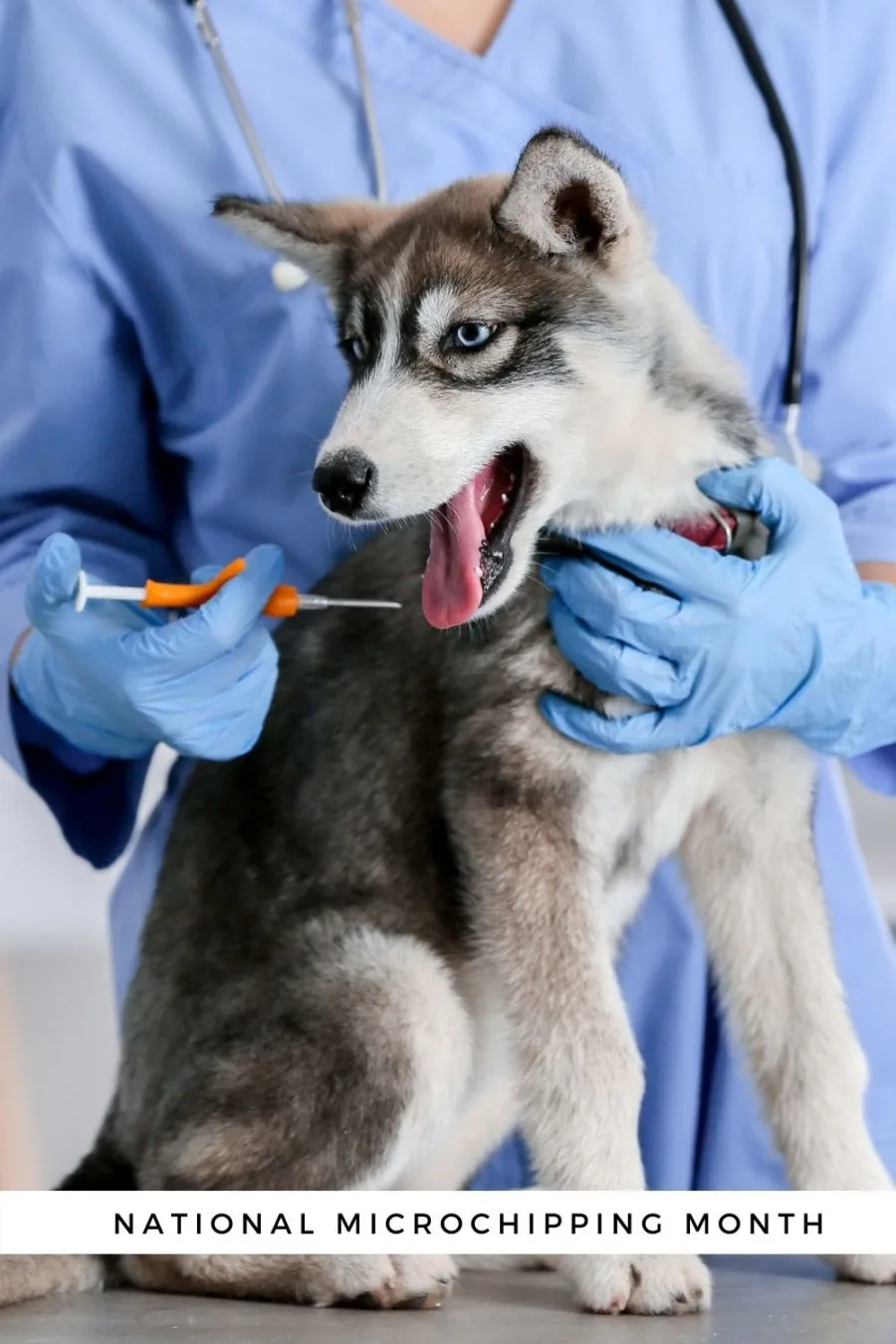June is National Microchipping Month, a time to remind everyone about this important tool to protect your dog’s safety and bring peace of mind to you.

If your dog is ever separated from you–by wandering off, getting lost in a natural disaster or becoming the victim of dognapping–a microchip can help you get your dog home. If he should wind up in a full shelter, that microchip can save his life.
“Keeping beloved pets safe is a top priority for pet owners, and microchipping offers a quick, safe and relatively painless solution to help protect animals from harm,” said Jean-Miguel Robadey, global director for HID Global’s Animal ID business.
The numerous natural disasters that have grabbed the headlines recently–from tornadoes and floods to earthquakes and wildfires–illustrate the sad fact that disaster can strike anywhere at any time. And with those disasters come lost pets.
Microchipping is so important for identifying lost pets during times of disaster when collars may be lost and families may be separated. It’s fairly inexpensive (and if you look for special events and pet expos in your area, you can often find discounted microchipping opportunities.
Related pet holiday: Check the Chip Day
How Are Dogs Micrchipped?
Microchipping involves inserting a small radio frequency identification (RFID) transponder encased in a tiny BIO glass tag beneath the animal’s skin. (It looks large in the photo but think grain of rice in terms of size.)
The microchipping procedure is safe and simple and only takes a few minutes. The vet will first scan your dog with a reader to make sure he isn’t already tagged, and then read the tag in the package to verify that it functions.
Next, the tiny tag is inserted with a syringe, not unlike giving an animal his shots. The tag is read again to ensure it still works properly.
Finally, the vet completes the paperwork and enrolls your dog in the online database.
The microchip contains your dog’s unique pet identification number so if your dog should become lost, vets and public authorities such as animal control can read the glass tag with any scanner, and follow the link of the animal ID number to online pet databases to trace a lost or stolen animal and return it to its rightful owner.
Official organizations can also use RFID in conjunction with the animal’s registration files, and add information to the database such as medical history, vaccination schedules, updated owner addresses and more.
“Keeping beloved pets safe is a top priority for pet owners, and microchipping offers a quick, safe and relatively painless solution to help protect animals from harm,” said Robadey. HID Global has been providing RFID solutions to safeguard pets for more than two decades and delivered more than one billion RFID tags worldwide.
How a microchip saved one dog’s life

Veterinarians concur on the importance of microchips as a way to reunite owners and dogs, and keep dogs out of shelters.
Dr. Jeff Werber, DVM, Chief Veterinarian for ProSense Pet Products explains, “I have the privilege of working with a number of rescue groups in the Los Angeles area, and last week heard a first-hand story that really hit home.
“One of our rescue groups was trying to intercept a Chow Chow who was found on the streets, and was being brought in to the shelter.
“The dog was in horrendous condition, malnourished, probably around 8 to 10 years of age, and, probably mostly out of fear, very aggressive.
“Based on the dog’s condition, aggressive tendencies, and the shelter’s sad overcrowding situation, this poor dog didn’t have a chance of being cleaned up, treated, and hopefully, adopted.
“As good fortune would have it, the dog was scanned for a microchip during his intake exam, and sure enough, he had one. Well, this changed everything.
“For one thing, it bought this poor creature a lot more time. You see, if a dog ends up in a shelter and is microchipped, he or she cannot be destroyed—even in kill shelters, until concerted efforts have been made to contact the dog’s last registered owner.
“In this case, instead of being placed on ‘death row,’ that little microchip, about the size of a tiny grain of rice, played a huge role in saving this dog’s life.
“Though the shelter was unable to connect with the dog’s last registered owners, the extra time was enough for the Chow Chow rescue group to complete his adoption procedure. Having regained his confidence, now he is actually a sweet dog in a great foster home.
“Please don’t think that an identification tag is all you need to keep your pet safe should he or she ever get away. Collars and tags can fall off, can be taken off, can wear out, and can be modified. There is certainly nothing ‘permanent’ about them. Microchips, on the other hand, are absolutely permanent, are immutable, and, despite a few reports over the past few years, are extremely safe.
“If your pet is not currently microchipped, I highly recommend having it done as soon as possible—that chip might just save its life!!!”
Pin it to remember National Microchipping Month

- How to Calm a Dog During Fireworks - June 20, 2024
- Taking Your Dog to See Santa: Tips for a Jolly Visit! - December 7, 2023
- The Pug Dog Price Tag: What You Need to Know Before You Get Your Pug - September 7, 2022
